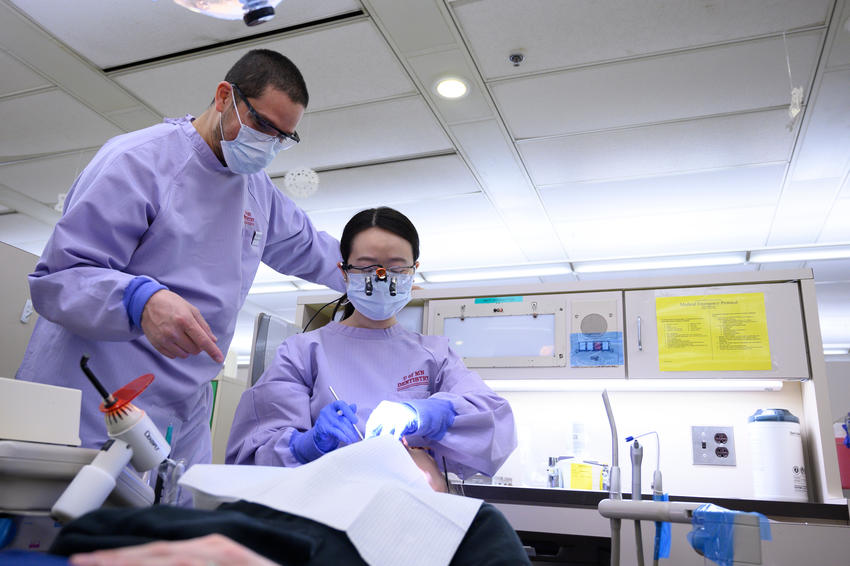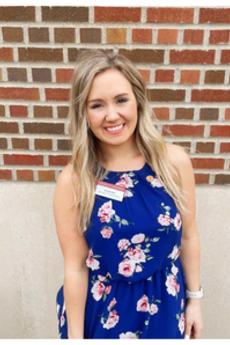Interprofessional capstone brings occupational therapy to DDS learners

An occupational therapy student is using her capstone project to improve the health and wellbeing of dental students at the University of Minnesota.
Nicole Motz, now in her third year of the occupational therapy program, has long held an interest in the healthcare profession and how occupational therapy can impact practitioners. In high school and throughout college, she worked as a nursing assistant and a pre- and post-operative technician. “I learned a lot about ergonomics from that perspective, and how it impacted nurses’ work lives and contributed to pain,” she explained. “Some of them ended up having to take time off work because of it.”
When she began studying the role of ergonomics in healthcare, and shared that interest with her faculty mentors, a capstone project working with the School of Dentistry seemed like a perfect fit.
The School of Dentistry first began pursuing a partnership with occupational therapy in 2020. Shannon Gillgian Wehr, senior student support associate, was excited to begin working with faculty members to discuss ways that the school could engage in interprofessionalism while enhancing wellness.
One such way was the hosting of a student–Motz–for a capstone project focused on ergonomics.
“Ergonomics isn’t covered extensively in our programs, and it is not uncommon for our students to reach out to us or our faculty about experiencing pain,” Wehr explained, “so it sounded like a great opportunity for learning on both sides.
Motz’s capstone project consists of creating an educational program to teach dental students about proper body positioning, as well as stretches and exercises that can help encourage strength and reduce pain. She will implement the program with a group of students, measuring their positioning before and after engaging with the program.
In addition to the overall study, Motz spent time working with DDS learners in the clinic and during their time working with manikins, met with participants outside the classroom and even shadowed alumni at their practices to gain a comprehensive understanding of how dentists move.
“Utilizing safe body mechanics in dentistry is huge,” Motz explained. “It is important for dentists to adopt a more neutral posture when they are working, but sometimes it can feel unavoidable to them at times, and so we see a lot of dentists twisting, turning, and bending to get the best line of sight. That’s probably the number one thing that contributes to injuries.”
Based on her observations thus far, Motz has found that stretching and exercise can in fact be impactful,and that one group that experiences a particular amount of stress is dental assistants.
“I found that, in my own observation and statistically based on research, they have more pain and injuries based on their positioning,” she explained. “Much of what I observed was incorrect height of the operator and patient in relation to the assistant and dental assistant stools that were not adjusted based on the height and size of the person assisting, which was leading to a lot of bending and reaching.”
That finding encouraged Motz to incorporate information about dental assistants into her educational curriculum–both to support dental students during their first months in clinic as they assist more seasoned learners, and so they know to support their own dental assistants when they practice someday.
Motz is learning quite a bit about ergonomics and how occupational therapy can be applied to the healthcare field and beyond. And the School of Dentistry is reaping the benefits of her work, too.
“I am looking forward to being able to share these educational materials with our students, faculty and staff,” said Wehr. “Although she has worked with third-year DDS students, learners across programs and even faculty and clinical staff can benefit from her work. There is so much more to be done, so I look forward to implementing this work and working with additional occupational therapy students in the future.”
